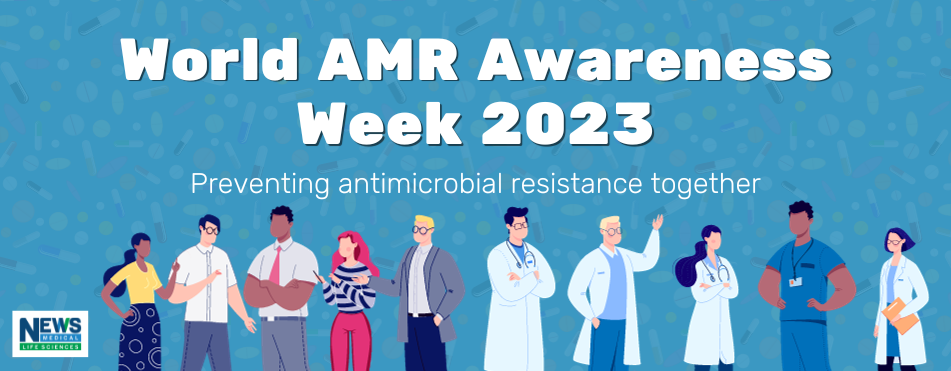Please introduce yourself, briefly outline your career, and tell us about your role within the World Health Organization.
I am Kitty van Weezenbeek (MD, PhD, MPH), the Director of Surveillance, Prevention and Control of AMR in the WHO AMR division. I have over 35 years of international public health experience in over 30 countries worldwide. In that time, I've covered all aspects of TB control, focusing on laboratory strengthening, surveillance, operational research, and drug-resistant TB (DR-TB). I completed my PhD on DR-TB in 1998 and have authored over 50 publications.
I once served as the coordinator of the MDR-TB team at WHO Geneva and was the TB Regional Advisor with the WHO Western Pacific Region. Before my current role as Director of Surveillance, Prevention and Control of AMR with WHO, I was the Executive Director of KNCV Tuberculosis Foundation, a prominent international NGO with offices across the globe. While there, I expanded KNCV's scope to include AMR and was a member of the steering committee of the Dutch public-private ‘AMR Global’ movement.
Throughout my time with KNCV, I provided DR-TB consultancy to many high-burden countries in Africa, Eastern Europe, South East Asia, and the Western Pacific Region. I emphasized a comprehensive programmatic response to DR-TB across all levels of the health system.
I've been a member of the WHO TB Strategic Technical Advisory Group (STAG) and have chaired both the ‘Global Green Light Committee for access to second-line drugs’ and the Global Working Group on DR-TB. I've passionately advocated for addressing the global drug shortage for treating DR-TB and for promoting R&D in this field. I've also contributed to numerous WHO guidelines on topics ranging from the prevention, diagnosis, treatment, and surveillance of MDR-TB to related matters such as the ethical aspects of TB care and stigma reduction.
My five voluntary and consecutive job transitions between KNCV and WHO have been invaluable for my career and personal growth. However, the years I spent practicing as a medical doctor alongside patients and health worker colleagues were equally impactful.
Understanding how patients, nurses, and doctors think, feel, and act has been not only a source of inspiration for me but also a crucial motivation to bridge scientific guidance with real-world situations.
World AMR Awareness Week (WAAW) commences on the 18th of November; this year's theme is "Preventing Antimicrobial Resistance Together." How does this theme align with the WHO's overarching objectives and priorities?
The misuse and overuse of antimicrobials primarily drive AMR in multiple sectors. To effectively reduce AMR, all sectors must use antimicrobials prudently and appropriately, and take preventive measures to reduce the transmission of (drug-resistant) infections.
This is why WHO promotes a comprehensive One Health response, in which WHO closely collaborates with the other Quadripartite organizations – namely the Food and Agriculture Organization of the United Nations (FAO), the United Nations Environment Program (UNEP) and the World Organisation for Animal (WOAH).
As for the human health sector, WHO promotes a shift from a focus on bugs and drugs and hospitals, to a comprehensive strategy that covers all levels of the health system and ensures that patients have access to antibiotics when they need them, but don’t take antibiotics when they do not.
The latter requires that both health-care providers and patients recognize that the use of antibiotics for viral infections, such as a common cold, does not benefit the patient, but instead causes harm for the individual and for society. Ideally, WAAW contributes to awareness raising and transfer of essential knowledge on proper antibiotic use.
The fewer infections, the less antibiotic use, and less emergence of resistance. This essentially means that prevention of AMR, includes strengthening of water, sanitation and hygiene (WASH), vaccination programs and IPC (infection prevention and control).
Optimal prevention of AMR needs to be fully integrated in other health systems strengthening initiatives, such as primary health care (PHC), Universal health care (UHC) and Pandemic preparedness and response. Obviously, we also need each sector to be adequately resourced so that they can effectively prioritize, cost and implement their priority actions within their specific sectors and then monitor the impact.

The WHO recently released a core package of people-centered interventions to support national action plans. Could you provide an overview of this recently released core package of 13 interventions and what they aim to achieve?
The 13 core interventions and accompanying priority actions are designed to address AMR in a programmatic manner that puts people, their needs and equitable access to health services at the center of the AMR response in the community, in primary care, secondary and tertiary care, and at national and/or subnational level.
These interventions are based on a thorough root cause analysis of barriers that people, patients and health workers are facing, and proposes four pillars and two foundational steps to address these.
The four pillars are: (1) prevention of infections; (2) access to essential health services; (3) timely, accurate diagnosis; and (4) appropriate, quality-assured treatment. The pillars are supported by the two foundational steps: effective governance, awareness and education; and strategic information through surveillance and research.
With over 170 countries having developed national action plans on AMR, why do you think the implementation remains fragmented and siloed? And how does the WHO's people-centered approach aim to address these gaps in the current AMR strategies employed by various countries?
The data received through the annual tracking AMR country self-assessment surveys (TrACSS) as well as anecdotal evidence from countries shows that implementation is fragmented and siloed, without effective governance, planning, coordination, resource allocation and accountability at (sub)national level.
Implementation of One Health national action plans (NAPs) on AMR requires strong political commitment and sector-specific AMR leadership to drive a joint multisectoral ‘One Health’ AMR response. This remains a challenge in many countries, especially low- and middle-income countries (LIMCs).
Second, the interdependency of different interventions is not recognized. For instance, diagnosis, surveillance, and IPC strongly depend on access to quality laboratory services for the diagnosis of bacterial infections and drug resistance, which is lacking in most settings. Appropriate use of antibiotics depends on diagnostic capacity, regulations, supply chain management, antimicrobial stewardship programmes, and strategic surveillance information.
However, in reality, different interventions are not implemented as a comprehensive programmatic approach, but rather as isolated thematic interventions. It is important that donors also play a role in supporting countries to embrace a programmatic public health approach as is being proposed by the people-centred approach and the 13 core intervention package.
Together with the WHO implementation handbook for national action plans on AMR and the people-centred approach, countries are encouraged to identify, prioritize, cost, resource, implement and monitor a core set of AMR interventions that are people-centred as part of their One Health national action plans on AMR.
How does the WHO plan to monitor and assess the effectiveness of the core interventions in real-world scenarios?
Through existing reporting mechanisms such as the tracking AMR country self-assessment surveys (TrACSS), International health regulation/ joint external evaluations (IHR/JEE), SDG indicator reporting relevant to AMR and essential health services and other monitoring and evaluation mechanisms for country national action plans on AMR.
The PCA proposes indicators under each core intervention. Ideally, WHO would coordinate and implement supportive multidisciplinary AMR monitoring missions to countries, mimicking decades of successful monitoring missions for TB and HIV. These monitoring missions have proven crucial to identify and analyze implementation gaps, propose evidence-based recommendations, and mobilize technical assistance.
We expect that anticipated contributions by the Global Fund and Pandemic Fund to the AMR response, will come with resources to integrate AMR monitoring in the monitoring of other disease programmes such as TB and HIV and broader health systems strengthening efforts.
What is antimicrobial resistance?
What are the expected challenges in implementing a people-centred approach in countries with differing health infrastructure and AMR awareness?
The most important challenge is to make policy-makers realize that the PCA comes with opportunities, rather than challenges. Most key interventions can be easily integrated in existing national health strategies, primary health care, UHC, pandemic preparedness and response, national laboratory strategies, regulatory systems, health education and so on. But coordination, and thus governance, to open the doors and get AMR integrated, are key to success.
Hence, we need a national AMR position that comes with the explicit mandate and the accountability to ‘weave’ the PCA interventions in existing health systems, recognizing the setting specific priorities, whether this is (lack of) awareness or insurance coverage, or laboratory capacity, or all combined. This way, the AMR response will also benefit from existing funding streams. However, it is clear that additional funding is needed.
This is why WHO developed the costing and budgeting tool, which has been successfully rolled out in a large number of countries to cost prioritized operational plans of national action plans on AMR. Moving forward, it is important that each country understands its own AMR people journey based on the PCA, the system and people challenges, to then prioritize people-centred interventions from the core list of 13 interventions as part of One Health national action plans on AMR and broader health sector strategic plans and then cost and mobilize the resources for sustainable implementation.
As AMR is a global challenge, please elaborate on why collaboration is so important in the fight against resistance? How is the WHO fostering collaboration between different stakeholders, including governments, private sectors, and NGOs, in the rollout of this approach?
As the key drivers and subsequent impact of AMR are felt across the human and animal health, and agriculture and environment sectors, action against AMR must be addressed in all these sectors through coordinated One Health and multisectoral collaboration, as well as sector-specific action and collaboration. AMR should be positioned as a priority within broader development issues.
WHO is fostering collaboration through the quadripartite organizations, the Global leaders group on AMR. WHO also supports fostering One Health and within-sector collaboration at regional and country levels.
To strengthen country leadership and collaboration skills on AMR, WHO facilitates national and regional trainings workshops for national AMR coordination mechanisms. The people-centred approach promotes the engagement of the community, CSOs and the private sector in the country-level AMR response.
 Image Credit: alphaspirit.it/Shutterstock.com
Image Credit: alphaspirit.it/Shutterstock.com
Looking ahead, what are the most critical actions or milestones that the WHO hopes to achieve in the fight against AMR in the next five years?
WHO will propose to the World Health Assembly in 2024 its strategic and operational priorities for addressing drug-resistant bacterial infections in human health (2025 – 2035). These priorities are aligned with the people-centred approach and WHO’s core package of interventions and will inform the UN General Assembly High-level Meeting on AMR in 2024, and related outcome documents and targets.
In addition, WHO will embark on new methods to strengthen the quality and representativeness of the AMR and antimicrobial consumption surveillance data received from countries; a new global AMR Diagnostic Initiative to strengthen the bacteriology and mycology laboratory capacities, laboratory networks and diagnostic stewardship; and new approaches to ensure that gender, equity and disability inclusion dimensions are fully integrated into the AMR national action plans development and revision processes; provide support for the uptake of the research agenda priorities; and scale up the provision of technical assistance to countries to build their capacity to address AMR, including through engaging other technical partners and organizations. All these initiatives are being developed in close collaboration with relevant parts of WHO, such as PHC, UHC, IPC, medicines etc.
Where can readers find more information?
About Kitty van Weezenbeek
 Kitty leads the WHO AMR/SPC Department which primarily focuses on human health aspects of AMR and related response strategies such as infection prevention and control; laboratory strengthening and diagnostic stewardship; rational treatment; and surveillance of AMR and antimicrobial consumption and use. In addition, the SPC Department supports countries with the development, costing, and implementation of evidence-based One Health National Action Plans, and evidence generation for innovation of AMR control.
Kitty leads the WHO AMR/SPC Department which primarily focuses on human health aspects of AMR and related response strategies such as infection prevention and control; laboratory strengthening and diagnostic stewardship; rational treatment; and surveillance of AMR and antimicrobial consumption and use. In addition, the SPC Department supports countries with the development, costing, and implementation of evidence-based One Health National Action Plans, and evidence generation for innovation of AMR control.
Before joining WHO in May 2020, Kitty was Executive Director of KNCV Tuberculosis Foundation, a large international NGO with country offices in twelve low- and middle-income countries. She worked twice before with WHO, first as Task Manager drug-resistant TB in Geneva and later as regional advisor TB and leprosy control in the Western Pacific Region, based in Manila.
During the last 25 years, she focused on surveillance, prevention and control of drug resistant tuberculosis; served on WHO TB Strategic Technical Advisory Group (STAG) and numerous WHO guideline committees; and chaired several global expert committees. Since 1984, she has assisted over 35 countries worldwide and co-authored over 50 peer reviewed publications. Kitty is a medical doctor, with an MPH, and a PhD on drug-resistant tuberculosis.